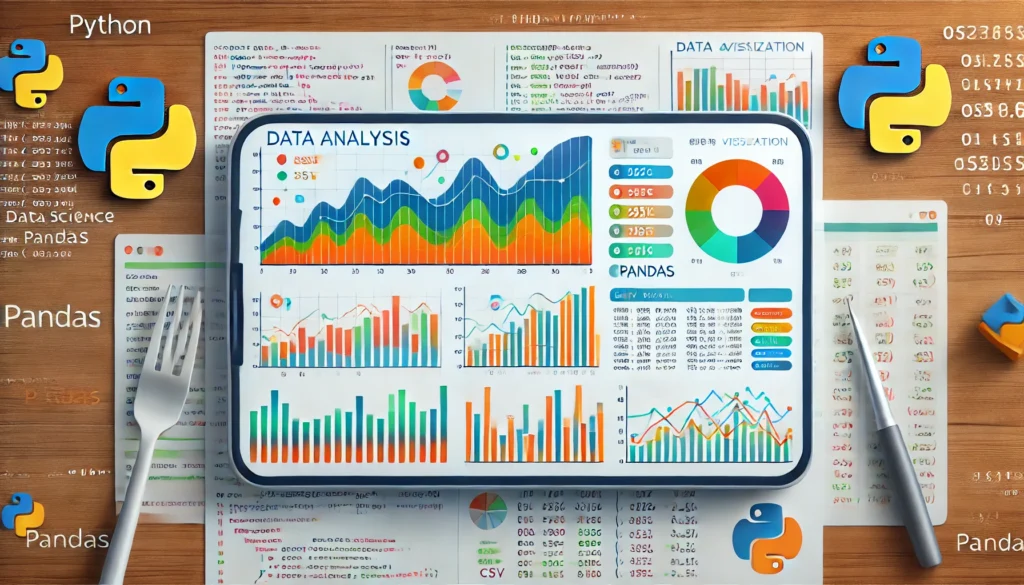COVID-19 Data Analysis and Visualization using Python, Pandas, and Matplotlib

Objective:
To analyze and visualize COVID-19 statistics such as confirmed cases, recoveries, and deaths using Python. This project will involve using Pandas to manipulate data and Matplotlib to visualize it through various graphs and charts. The data will be stored in a CSV file, and the students will extract meaningful insights by analyzing trends, peaks, and patterns in the pandemic’s progression.
Amazon Sale
Project Modules:
- CSV Data Handling with Pandas:
- Load COVID-19 data from a CSV file.
- Use Pandas to filter, clean, and organize data.
- Perform basic operations like grouping data by date or country and summarizing the statistics.
- Data Analysis:
- Calculate essential statistics like total confirmed cases, recoveries, and deaths.
- Identify the countries with the highest number of confirmed cases.
- Calculate recovery and death rates.
- Analyze the trends over time (e.g., when the pandemic was at its peak).
- Data Visualization using Matplotlib:
- Visualize key data trends using different types of charts:
- Line Chart: Global confirmed cases over time.
- Bar Graph: Comparison of COVID-19 cases between different countries.
- Pie Chart: Distribution of total cases, recoveries, and deaths.
Step-by-Step Breakdown:
1. CSV File Creation (covid_data.csv)
The CSV file covid_data.csv should contain COVID-19 statistics from a dataset with the following columns:
- Date: Date of the data entry.
- Country: Name of the country.
- Confirmed: Total confirmed cases.
- Recovered: Total recovered cases.
- Deaths: Total deaths. Sample CSV data:
Date,Country,Confirmed,Recovered,Deaths
2020-01-22,China,547,28,17
2020-01-22,India,0,0,0
2020-01-23,China,639,30,18
2020-01-23,India,0,0,0
...2. Python Program Structure
Modules to Use:
pandas: For data manipulation and analysis.matplotlib: For data visualization.numpy(optional): For performing numeric calculations if necessary.
Sample Python Script:
import pandas as pd
import matplotlib.pyplot as plt
# Load data from CSV
def load_data(filename):
data = pd.read_csv(filename)
return data
# Calculate global statistics (total confirmed cases, recoveries, and deaths)
def calculate_global_stats(data):
total_confirmed = data['Confirmed'].sum()
total_recovered = data['Recovered'].sum()
total_deaths = data['Deaths'].sum()
return total_confirmed, total_recovered, total_deaths
# Plot the global trend of confirmed cases over time
def plot_global_trend(data):
global_data = data.groupby('Date').sum()
plt.figure(figsize=(10, 6))
plt.plot(global_data.index, global_data['Confirmed'], color='blue', label='Confirmed Cases')
plt.xlabel('Date')
plt.ylabel('Number of Cases')
plt.title('Global COVID-19 Confirmed Cases Over Time')
plt.xticks(rotation=45)
plt.legend()
plt.grid(True)
plt.show()
# Main program execution
if __name__ == "__main__":
# Load data
covid_data = load_data('covid_data.csv')
# Calculate global statistics
confirmed, recovered, deaths = calculate_global_stats(covid_data)
print(f"Total Confirmed: {confirmed}, Total Recovered: {recovered}, Total Deaths: {deaths}")
# Plot global trend
plot_global_trend(covid_data)3. Additional Functionalities:
- Country-Specific Analysis:
- Create a function that filters the data for a specific country and provides a trend line for that country.
def plot_country_trend(data, country):
country_data = data[data['Country'] == country]
plt.figure(figsize=(10, 6))
plt.plot(country_data['Date'], country_data['Confirmed'], color='green', label=f'{country} Confirmed Cases')
plt.xlabel('Date')
plt.ylabel('Number of Cases')
plt.title(f'COVID-19 Confirmed Cases in {country} Over Time')
plt.xticks(rotation=45)
plt.legend()
plt.grid(True)
plt.show()- Pie Chart for Global Data:
- A pie chart that displays the proportion of confirmed cases, recoveries, and deaths worldwide.
def plot_global_pie_chart(confirmed, recovered, deaths):
labels = ['Confirmed', 'Recovered', 'Deaths']
sizes = [confirmed, recovered, deaths]
colors = ['yellow', 'green', 'red']
plt.figure(figsize=(7, 7))
plt.pie(sizes, labels=labels, colors=colors, autopct='%1.1f%%', startangle=140)
plt.title('Global COVID-19 Statistics')
plt.axis('equal')
plt.show()4. Data Visualization Options:
- Line Chart (Global Trend):
def plot_line_chart(data):
global_data = data.groupby('Date').sum()
plt.plot(global_data.index, global_data['Confirmed'], color='blue')
plt.xlabel('Date')
plt.ylabel('Confirmed Cases')
plt.title('Global COVID-19 Confirmed Cases Over Time')
plt.grid(True)
plt.show()- Bar Graph (Country-Wise Comparison):
def plot_country_comparison(data):
top_countries = data.groupby('Country').sum().nlargest(10, 'Confirmed')
plt.bar(top_countries.index, top_countries['Confirmed'], color='orange')
plt.title('Top 10 Countries with Highest COVID-19 Confirmed Cases')
plt.xlabel('Country')
plt.ylabel('Confirmed Cases')
plt.xticks(rotation=45)
plt.show()Conclusion:
This project will provide students with hands-on experience in handling real-world data using Python, Pandas, and Matplotlib. They will gain insights into COVID-19 data, learning how to perform analysis and visualizations that are valuable for understanding patterns and trends.
Extensions:
- Extend the project by allowing users to select specific countries for analysis.
- Add functionality to calculate rolling averages to smooth out the data.
- Incorporate a feature to predict future trends using linear regression or other forecasting models.
Would you like a blog post or further details for this project?
BIG VUE 75 Inch Interactive Flat Panel | Android 14 Smart Digital Board | 8GB RAM 128GB ROM | Multitouch Screen Display for Teaching, School, College, Institute, Classroom and Office Use







